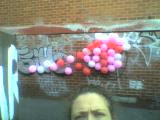GROUP 2.1 - Reb, Nathalie, Selwyn, Kay
This project is is an experiment in monitoring the behaviour of online communities and how memes/image macros evolve in various online environments. From a shared fascination with internet memes - injokes - and enjoying the lulz, we decided that that the most enjoyable way to do this would be by making our own versions of existing online memes/image macros. These include LOLcat, Om nom nom nom image macros, demotivational posters, and EPIC FAILs. We will then be posting these images on various websites, including Digg, Reddit and (perhaps most importantly) 4chan. In addition to this, we will post on more meme-specific websites like Icanhazcheezburger (LOLcats). The piece de resistance however, will be an original video. With all our power, we will endeavour to make this video go viral. By posting on the aforementioned websites, creating a Facebook group, trying to start a fanbase. The progress of each meme, and the responses we get from users from each website will be chronicled on our blog, through
the use of regularly updated posts containing multiple screenshots. By harnessing the power of the "internets", we will discover how realistic it is to try and "make" a meme - all "for the lulz".
GROUP 2.2 - Elise, Michael, Daniel, Jasmine
When you use the smiley face emoticon on MSN, Facebook, or even in your text messages, are you really, physically smiling? 'Project Smiley' is a web site that examines the evolution of the smiley face symbol through social, cultural and technological changes. The evolution of language and symbols has seen the meaning and representation of words such as 'cool' and 'you' change dramatically over time. Originally the smiley face was seen as a universal symbol of happiness that transcended cultural barriers. In recent years, social changes reflected in pop culture have seen the traditional meaning of the smiley face warped through 'dark' visual designs. With the insertion of the smiley face into online communication models, it can be seen that, as the meaning was altered in popular culture, the role of the smiley face as an emoticon would be unable to establish and sustain a definitive meaning. We intend to illustrate the evolution of the smiley face symbol through both written and visual components, whilst exploring the notion that the symbol's meaning has changed, and will continue to be adapted and appropriated, through use in the new media environment.
GROUP 2.3 - Liam, Damien, Alice, Dunja
Haveyouseenourtshirt is a new media project designed and developed as an exploration of the theme of 'evolution'. The project revolves around a plain white t-shirt the project group intends to send out to willing participants with a simple set of instructions. Those being to 'show the t-shirt the time of its life', document your time with the t-shirt, pass it on within two days and submit your documentation to the project group. The documentation when recieved by the project group is to posted on a public blog, haveyouseenourtshirt.blogspot.com, where is can be viewed by the public, commented upon and ultimately become the documentation of the t-shirt's overall evolution. Participant's are free to alter the tshirt, but are not required to; alterations to the shirt are to inevitably constitute the most evident form of evolution, the combined submissions and the stories that arise from the participatory community to become the secondary expression of the tshirt's evolution. The theme of evolution being explored by this project is being done through the formation of a fan community; a community formed around a common interest in the t-shirt. The project attempts to explore the establishment of a fan community, specifically a truly participatory fan community, and as such the project
group intends to place all but total control of the evolution of the t-shirt to the community. Compiled submissions from the community's participants will act towards the creation of a transmedia narrative as all reasonable submissions on experiences with the t-shirt submitted to the project group will be posted to the blog for public viewing.






